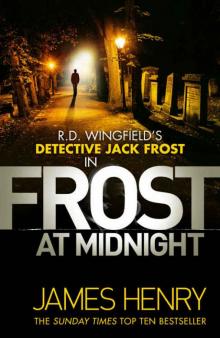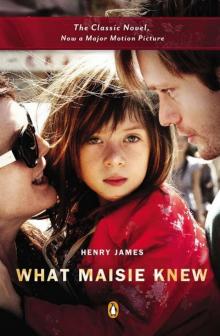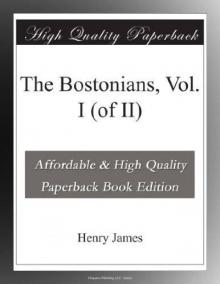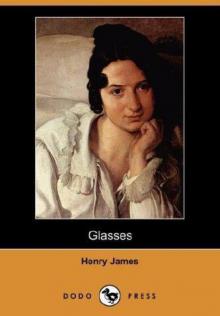- Home
- Henry James
Collected Stories Page 2
Collected Stories Read online
Page 2
James was becoming interested in the very young, and Morgan is observed with the same tender attention as is Nanda in The Awkward Age and young Miles in ‘The Turn of the Screw’, a story to be met with in the second volume of this selection. James was also interested in heroism, of the quiet unassuming sort, and in a similarly unadvertised sense of honour, of the kind that makes Morgan blush so painfully for his parents at the end of the tale. Relations here indeed ‘stop nowhere’, for James has left his ending most suggestively but movingly unclear. How much does the boy ‘know’? Is he haunted by the thought that his tutor may not want him, or is he upset by the suspicion that the tutor may want him too much? His place, his honourable place, is surely with his own parents, awful as they may be. James resolves the problem, as he does in other stories, by a convenient heart-attack; but the reader’s interest has been effectively tempted – satisfied too – by the craftsmanship that displays a climax in the last few pages.
Honour of the unpretentious sort is the theme of other Jamesian tales of the middle period, but it begins to give place to stories which themselves explore the theme of ‘story’, of hidden meaning, of the true and the false, and how the artist must reconcile them in obtaining his overall effect. Stories like ‘The Author of “Beltraffio” ’, The Lesson of the Master’ and ‘The Real Thing’ examine the psychology of the artist and the relation between the selves of artist and human being: what he can make use of and what he can’t. An anecdote she thought might interest him was once told to James by a neighbour at a dinner party. He stopped her in the middle, thanking her for the idea of it but preferring not to know how, in real life, it ended. Endings in life are merely banal. This truth for the artist makes a painful comedy in ‘The Real Thing’ (in volume two of this selection), where an all too genuine lady and gent who have fallen on hard times make the dolorous discovery that their very gentility tells against them when they seek to play for the painter the part of the gentlefolk they genuinely are.
As creator and craftsman James was never an experimentalist in the modern sense. His Diaries show his interest in narrative, and in what would today be called the theory of the story, but his instinct was to let a tale grow naturally in his mind and on the page, rather than to try to manipulate it. Sometimes he can remind us of Chekhov; sometimes even, in his sudden economies of effect, of Kipling, de Maupassant, or his fellow-American Ernest Hemingway. Stories like ‘The Patagonia’ and ‘The Marriages’ – the former in particular – have a degree of sudden violence about them which the reader may hardly expect, but which is entirely justified by the logic of events and the skill of the narration. What may strike us most is the rich variety of the tales and the amount of ground they cover, in terms not only of geography – the European and transatlantic scenes – but of nationality and society. James is emphatically not a story-writer in the mode, say, of Somerset Maugham, with a single tone and a limited range of theme. He varies; he alters; he reminds us, by the unobtrusive way he gets inside his subjects and characters, of Keats’s definition of the true artist as a man of ‘negative capability’, who does not impose his own outlook and personality on the worlds of which he becomes a part.
That is not to say – to return to my first point – that James’s own history and personality are not vividly revealed by many of the stories. The steely determination that lurks in ‘The Aspern Papers’ was James’s own, as are the hidden will, and the secret urge to independence and self-sufficiency, which appear in so many of the stories, in the guise of various sorts of sacrifice or renunciation. The bulk and variety of the stories themselves attest to that need for independence, for in the middle period of James’s London life they were his principal source of income, many not included in this volume being what he called ‘potboilers’, written in comparative haste and solely for money. Short story magazines, of which there were many both in New York and London, paid well in those days; and an experienced and reasonably well-known writer like James could make a regular if still comparatively modest income out of them.
But there was no question of undue haste about the composition of such a masterpiece as ‘The Pupil’. It illustrates admirably the way in which an anecdote casually told him by a friend or dinner-table acquaintance could fuse in James’s creative process with memories and experiences of his own – memories which would not otherwise have been brought out into the light. An American doctor from Florence happened to mention to James, when they took an Italian railway journey together, the case of a young boy with a weak heart, dragged about the continent by pretentious shabby-genteel parents. ‘Here was a thumping windfall’, as James was later to recall, and one that incongruously brought back his own peripatetic childhood, carried round Europe by parents whose finances, although never as precarious as those of the Moreens, fluctuated sufficiently to alarm a sensitive small boy, all too conscious of the anxiety in his parents’ voices when the dollar dropped during the American depression of 1857, and it became expedient to move in haste from Paris to more frugal lodgings in Boulogne-sur-Mer.
Here was the ideal combination for James: something he had been told, something that he had experienced, coming together in what most readers or writers would hardly recognize as the modest beginnings of a story. But then, as is shown by the title of one of the tales in the second volume of this collection, for James there could always be in every episode of life, somehow and somewhere, ‘The Story in It.’
John Bayley
SELECT BIBLIOGRAPHY
Biographically, the five-volume Life by Leon Edel, Hart-Davis, 1953–72, is unchallenged in comprehensiveness. F. W. Dupee’s Henry James: His Life and Writings, Methuen, 1951, rev. ed. 1965, remains an excellent short biography. Miranda Seymour’s A Ring of Foreign Correspondents: Henry James and his English Circle 1897–1916, Hodder & Stoughton, 1988, offers a charming account of the writer’s domestic life and friendships.
There are various collections of letters, including four volumes edited by Edel and published by Harvard University Press in the US and Macmillan in the UK, 1974–84. James’s Complete Notebooks, edited by Edel and L. H. Powers, Oxford University Press, 1987, throw light on the fiction, including many of the longer tales.
There is a vast quantity of James criticism, much of it excellent. Complete listings can be found in the Bibliography of Henry James by Edel and D. H. Laurence, Hart-Davis, 1961, though this is probably only of use to the advanced student. Among accessible short surveys of James’s fictions are Dupee (see above), D. W. Jefferson, Henry James, Oliver and Boyd, 1960, and Tony Tanner, Henry James: The Writer and his Work, University of Massachusetts Press, 1985, which includes a helpful brief bibliography and a chronological listing of James’s books. While there are no good studies devoted specifically to the short stories, John Bayley’s The Short Story: Henry James to Elizabeth Bowen, Harvester Press, 1988, is a useful starting point.
CHRONOLOGY
Please note: Text is repeated below at a larger size.
DATE AUTHOR’S LIFE
1842 Birth of William James.
1843 Henry James born in New York City.
1855–9 Extensive travels and education abroad.
1860 Return to America.
1862–3 Harvard Law School.
1864 First story (‘A Tragedy of Error’) published anonymously.
1865 First signed story (‘The Story of a Year’) published in Atlantic Monthly.
1869 First adult travels in Europe (to 1870).
1870 Death of Minny Temple. Watch and Ward – first novel – serialized in Atlantic Monthly.
1872–4 Further travels in Europe.
1874–5 Returns to America on completion of his first large novel, Roderick Hudson.
1875 Transatlantic Sketches, A Passionate Pilgrim (first collection of stories) and Roderick Hudson published.
1875–6 Visits Paris, where he meets Turgenev, Zola and Flaubert. Settles in London.
1877 The American.
1878 ‘Daisy Miller’ establis
hes his international reputation. Publishes first volume of essays (French Poets and Novelists).
1879 Hawthorne.
188 Washington Square. The Portrait of a Lady.
1882–3 Visits America. Death of his parents.
1884 Returns to London with his sister Alice.
1886 The Bostonians. The Princess Casamassima.
1887 Living in Italy. Friendship with Constance Fenimore Woolson.
1888 ‘The Aspern Papers’.
1890 The Tragic Muse. Dramatizes The American, which has a short run.
1891 Writing for the theatre.
1892 Death of Alice James.
1895 Booed off stage at première of Guy Domville. Gives up writing for theatre.
1897 Settles at Lamb House, Rye. The Spoils of Pynton. What Maisie Knew.
1898 ‘In the Cage’. ‘The Turn of the Screw’.
1899 The Awkward Age. Friendship with Conrad and Wells.
1901 The Sacred Fount.
1902 The Wings of the Dove.
1903 The Ambassadors. ‘The Beast in the Jungle’. First meeting with Edith Wharton.
1904 The Golden Bowl.
1905 Visits America for the first time in 20 years.
1906 The American Scene.
1906–10 Prepares ‘New York Edition’ of his work in 24 volumes.
1910 Last story, ‘A Round of Visits’, published. Death of brother, William.
1913 A Small Boy and Others (autobiography).
1914 Notes of a Son and Brother (autobiography).
1915 Becomes British subject.
1916 Dies in London, 28 February.
1917 The Ivory Tower and The Sense of the Past (unfinished novels). The Middle Years (autobiography).
DATE LITERARY CONTEXT
1846 Balzac: La Cousine Bette.
1847 Thackeray: Vanity Fair.
Charlotte Bronte: Jane Eyre.
Emily Bronte: Wuthering Heights.
1850 Dickens: David Copperfield.
Hawthorne: The Scarlet Letter.
Turgenev: A Month in the Country.
Death of Balzac.
1851 Melville: Moby-Dick.
1855 Trollope: The Warden.
1856 Flaubert: Madame Bovary.
Turgenev: Rudin.
1858 George Eliot: Scenes of Clerical Life.
1859 Eliot: Adam Bede.
1860 Eliot: The Mill on the Floss.
Turgenev: On the Eve.
Hawthorne: The Marble Faun.
1861 Dickens: Great Expectations.
Eliot: Silas Marner.
Turgenev: Fathers and Children.
1862–3 Flaubert: Salammbô.
1864 Trollope: Can You Forgive Her?
1865 Dickens: Our Mutual Friend.
1866 Dostoevsky: Crime and Punishment.
Eliot: Felix Holt.
1867 Zola: Thérèse Raquin.
1869 Flaubert: L’Education sentimentale.
Tolstoy: War and Peace.
1871 Eliot: Middlemarch (to 1872).
Zola: La Fortune des Rougon.
1874–5 Hardy: Far from the Madding Crowd.
1875 Trollope: The Way We Live Now.
1875–6 Eliot: Daniel Deronda.
Twain: Tom Sawyer.
1878 Hardy: The Return of the Native.
1879 Ibsen: A Doll’s House.
1880 Dostoevsky: The Brothers Karamazov.
Death of George Eliot and Flaubert.
1883 Maupassant: Une Vie.
1884 Mark Twain: The Adventures of Huckleberry Finn.
Maupassant: Miss Harriet.
1885 Howells: The Rise of Silas Lapham.
Zola: Germinal.
Maupassant: Bel Ami.
1886 Stevenson: Dr Jekyll and Mr Hyde.
Tolstoy: ‘The Death of Ivan Illych’.
1887 Chekhov: ‘The Kiss’.
1888 Kipling: Plain Tales from the Hills. Chekhov: ‘The Steppe’.
1889 Tolstoy: ‘The Kreutzer Sonata’.
1890 William James: Principles of Psychology.
Kipling: Soldiers Three.
1891 Hardy: ‘less of the d’Urbervilles.
Gissing: New Grub Street.
1892 Wilde: Lady Windermere’s Fan.
Conan Doyle: The Adventures of Sherlock Holmes.
1895 Crane: The Red Badge of Courage.
Hardy: Jude the Obscure.
Wells: The Time Machine.
Wilde: The Importance of Being Earnest.
Tolstoy: ‘Master and Man’.
1896 Chekhov: The Seagull; ‘My Life’.
1897 Conrad: The Nigger of the ‘Narcissus’.
Wells: The Invisible Man.
1898 Shaw: Plays Pleasant and Unpleasant.
1899 Chopin: The Awakening.
Norris: McTeague.
1900 Dreiser: Sister Carrie.
Conrad: Lord Jim.
1901 Kipling: Kim.
1901–9 Shaw: Three Plays for Puritans.
1902 William James: Varieties of Religious Experience.
1903 Butler: The Way of All Flesh.
Chekhov: The Cherry Orchard.
1904 Conrad: Nostromo.
Kipling: Traffics and Discoveries.
1905 Wells: Kipps.
Edith Wharton: The House of Mirth.
1906 Sinclair: The Jungle.
1907 Adams: The Education of Henry Adams.
Conrad: The Secret Agent.
William James: Pragmatism.
1908 Forster: A Room with a View.
Bennett: The Old Wives’ Tale.
1909 Wells: Ann Veronica; Tono Bungay.
Kipling: Actions and Reactions.
1910 Wells: Mr Polly.
Forster: Howards End.
1911 Conrad: Under Western Eyes.
Beerbohm: Zuleika Dobson.
1912 Wharton: Ethan Frome.
Mann: Death in Venice.
1913 Lawrence: Sons and Lovers.
Wharton: The Custom of the Country.
Proust: Swann’s Way.
1914 Joyce: Dubliners.
Conrad: Chance.
1915 Lawrence: The Rainbow.
Ford: The Good Soldier.
Conrad: Victory.
Woolf: The Voyage Out.
1916 Joyce: A Portrait of the Artist as a Young Man.
DATE HISTORICAL EVENTS
1848 European revolutions. Californian Gold Rush.
1851 Great Exhibition.
1852 Louis Napoleon proclaimed Emperor of France.
1854–6 Crimean War.
1857 Indian Mutiny.
1859 Darwin: The Origin of Species.
1861 Ten states secede from Union. American Civil war begins.
1861–5 Presidency of Lincoln.
1864 End of Civil War. Assassination of Lincoln.
1867 Marx: Das Kapital I.
1870 Franco-Prussian War.
1874–5 First Impressionist exhibition in Paris (1874).
1874–6 Invention of telephone (1876).
1880 Gladstone becomes Prime Minister.
1881 Irish Land Act.
1882–3 Married Women’s Property Act (1882).
1888 Year of the ‘Great Upheaval’ (USA): 700,000 on strike; demand for eight-hour day.
Victoria’s Golden Jubilee.
1896 Klondike Gold Rush.
1899 Boer War (to 1902).
1900 Freud: The Interpretation of Dreams.
1901 Death of Queen Victoria. Marconi transmits messages across the Atlantic.
1901–9 US Presidency of Theodore Roosevelt.
1903 Wright brothers’ powered flight. Emmeline Pankhurst founds Women’s Social and Political Union.
1905 First Russian Revolution.
1907 Cubist exhibition in Paris.
1909 First Ford Model T car.
1911 Death of Edward VII. Strikes of dockers, miners, railwaymen, transport workers in Britain (to 1912). Suffragette riots.
1912 Sinking of the Titanic. Woodrow Wilson wins US presid
ential election.
1914 Outbreak of World War I.
A LANDSCAPE-PAINTER
Do you remember how, a dozen years ago, a number of our friends were startled by the report of the rupture of young Locksley’s engagement with Miss Leary? This event made some noise in its day. Both parties possessed certain claims to distinction: Locksley in his wealth, which was believed to be enormous, and the young lady in her beauty, which was in truth very great. I used to hear that her lover was fond of comparing her to the Venus of Milo; and, indeed, if you can imagine the mutilated goddess with her full complement of limbs, dressed out by Madame de Crinoline, and engaged in small-talk beneath the drawing-room chandelier, you may obtain a vague notion of Miss Josephine Leary. Locksley, you remember, was rather a short man, dark, and not particularly good-looking; and when he walked about with his betrothed it was half a matter of surprise that he should have ventured to propose to a young lady of such heroic proportions. Miss Leary had the grey eyes and auburn hair which I have always attributed to the famous statue. The one defect in her face, in spite of an expression of great candour and sweetness, was a certain lack of animation. What it was besides her beauty that attracted Locksley I never discovered; perhaps, since his attachment was so short-lived, it was her beauty alone. I say that his attachment was of brief duration, because the break was understood to have come from him. Both he and Miss Leary very wisely held their tongues on the matter; but among their friends and enemies it of course received a hundred explanations. That most popular with Locksley’s well-wishers was, that he had backed out (these events are discussed, you know, in fashionable circles very much as an expected prize-fight which has miscarried is canvassed in reunions of another kind) only on flagrant evidence of the lady’s – what, faithlessness? – on overwhelming proof of the most mercenary spirit on the part of Miss Leary. You see, our friend was held capable of doing battle for an ‘idea’. It must be owned that this was a novel charge; but, for myself, having long known Mrs Leary, the mother, who was a widow with four daughters, to be an inveterate old screw, it was not impossible for me to believe that her first-born had also shown the cloven foot. I suppose that the young lady’s family had, on their own side, a very plausible version of their disappointment. It was, however, soon made up to them by Josephine’s marriage with a gentleman of expectations very nearly as brilliant as those of her old suitor. And what was his compensation? That is precisely my story.

 The American
The American The Wings of the Dove, Volume 1 of 2
The Wings of the Dove, Volume 1 of 2 Frost at Midnight
Frost at Midnight Morning Frost
Morning Frost The Portrait of a Lady — Volume 1
The Portrait of a Lady — Volume 1 Fatal Frost
Fatal Frost The Europeans
The Europeans The New York Stories of Henry James
The New York Stories of Henry James Great Short Novels of Henry James
Great Short Novels of Henry James Washington Square
Washington Square The Portrait of a Lady — Volume 2
The Portrait of a Lady — Volume 2 The Ambassadors
The Ambassadors The Wings of the Dove
The Wings of the Dove The Princess Casamassima (Classics)
The Princess Casamassima (Classics) The Coxon Fund
The Coxon Fund First Frost
First Frost Henry James
Henry James The Daily Henry James
The Daily Henry James Travels With Henry James
Travels With Henry James The Reverberator: A Novel
The Reverberator: A Novel What Maisie Knew (Henry James Collection)
What Maisie Knew (Henry James Collection) The Outcry
The Outcry The Marriages
The Marriages The Wings of the Dove, Volume 2
The Wings of the Dove, Volume 2 The Bostonians, Vol. I
The Bostonians, Vol. I The Outcry: -1911
The Outcry: -1911 The Complete Works of Henry James
The Complete Works of Henry James Letters from the Palazzo Barbaro
Letters from the Palazzo Barbaro The Pupil
The Pupil The Bostonians, Vol. II
The Bostonians, Vol. II Pandora
Pandora Glasses
Glasses The Princess Casamassima
The Princess Casamassima What Maisie Knew
What Maisie Knew The Reverberator
The Reverberator The Golden Bowl - Complete
The Golden Bowl - Complete Confidence
Confidence Wings of the Dove (Barnes & Noble Classics Series)
Wings of the Dove (Barnes & Noble Classics Series) The Spoils of Poynton
The Spoils of Poynton